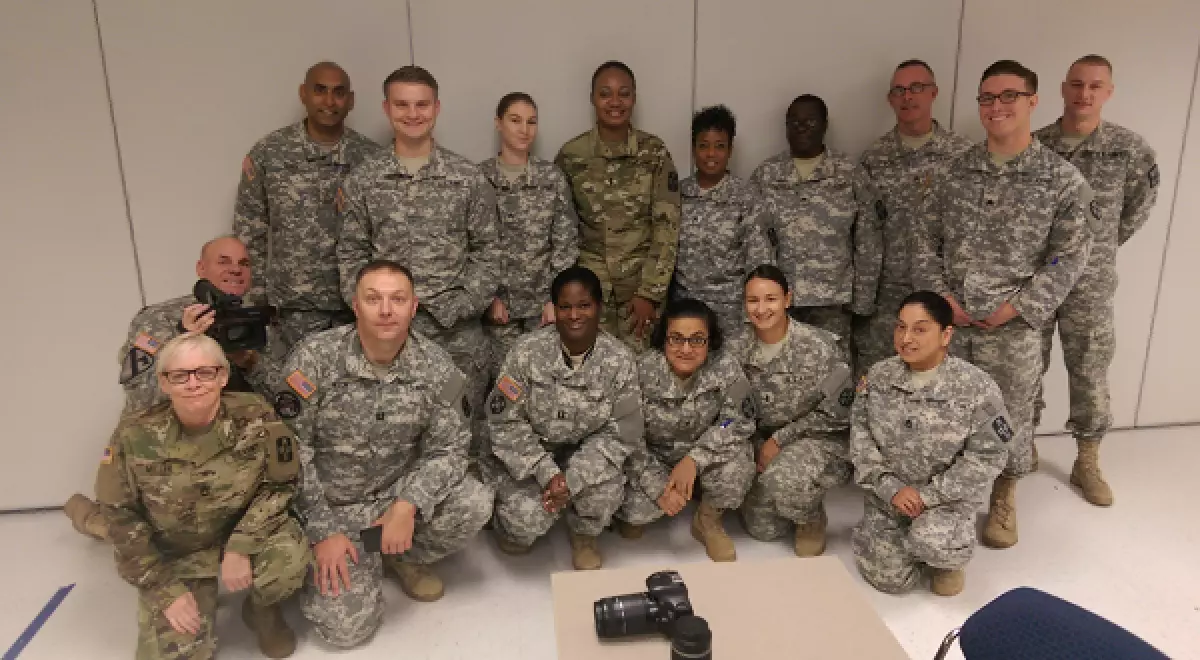Joining the military is a decision that requires sacrifice and commitment. It's a choice that can provide unique experiences and benefits unlike any other. When considering joining the military, you may have to decide between active duty and reserves. Each branch offers both options, with their own set of advantages and considerations to weigh.
US Army Reserves
 Image: army.mil
Image: army.mil
The Army Reserve allows individuals to serve their country part-time while staying close to home. This opportunity provides valuable job skills that can translate to civilian career fields. As a member of the Army Reserve, you would serve one weekend a month and two weeks a year in training. However, there is a possibility of being called to active duty when the Army needs someone with your specialty.
The Army Reserve offers various positions in fields such as Homeland Security, Information Technology, Biohazard Protection, Logistics, Civil Affairs, Military Information Support Operations, and Medical Services. While certain jobs have additional qualifications, the Army Reserves generally require individuals to be 17 to 34 years old, a US citizen or permanent resident alien, in good moral standing, and in good physical condition.
Army Reserve members receive drill pay ranging from just over $3,000 to over $5,000 a year, depending on rank. They also have access to job bonuses, tuition assistance, low-cost health and dental insurance, life insurance, and veteran retirement benefits.
Pros:
- Ability to stay near home
- Access to benefits while working part-time
- Receive training that translates to civilian careers without signing up full-time
Cons:
- Not all MOSs have reserves options
- Does not offer full-time pay
- May still have to deploy
US Navy Reserves
 Image: Jbsa.mil
Image: Jbsa.mil
The US Navy Reserve consists of both full-time and part-time individuals who can enter into active duty or have previously served in active duty. The Navy Reserves have three organizational categories: Ready Reserve, Standby Reserve, and Retired Reserve-Inactive.
Most Navy Reservists serve one weekend a month and two weeks a year, but full-time opportunities are also available. Navy Reservists perform job functions similar to their active duty counterparts, with roles such as Hospital Corpsman, Information Systems Technician, Master-At-Arms, Seabees, and Gunners Mate.
Reservists receive four days of base pay for every two days of traditional weekend drilling. Their pay is based on the same scale as active duty personnel, and they can receive bonuses and special pay. Reservists are eligible for benefits such as healthcare, dental care, bonuses, and tuition assistance.
Pros:
- Ability to serve full or part-time
- Available bonuses and special pay
- Follow the same promotion and pay raise scale as active duty
Cons:
- No guarantee of retaining the same rating
- Joining as an Individual Augmentee may result in a higher chance of being moved to active duty
- May require personal time to maintain physical fitness
US Air Force Reserves
 Image: af.mil
Image: af.mil
The US Air Force Reserves is open to non-prior service, prior service, and officer personnel. Most positions in the Air Force Reserves are part-time, with initial service commitments of six years active duty and two additional years inactive. Reservists can serve on Air Force Bases, Air Reserve Bases, or air stations shared with other military branches.
The Air Force Reserves offers a variety of jobs that are similar to those offered to active duty personnel. Some of these jobs include Loadmaster, Tactical Air Control Party, Special Missions Aviation, Cyber Warfare, and Flight Attendant. Reservists receive pay based on rank, time of service, and the type of duty performed. They also have access to low-cost medical and dental care, bonuses, and tuition assistance.
Pros:
- Most Reservists work close to home
- Potential enlistment bonuses up to $20,000
- Direct Transfer options available
Cons:
- No guarantee of retaining the same rank
- May be assigned to a location further away from home, depending on job availability
- Split training option not usually available
US Marine Corps Reserves
 Image: Marines.mil
Image: Marines.mil
The Marine Corps Reserves offers opportunities similar to other military branches. Through their Selected Marine Corps Reserve option, individuals work one weekend a month and two consecutive weeks a year, with the same training and MOS options as enlisted members. The Marine Corps Reserves also provide additional options for longer-term commitments.
Reservists can choose to spend either 6 years in drill status with 2 years in Individual Ready Reserve (IRR), 5 years in drill status with 3 years in IRR, or 4 years in drill status with 4 years in IRR. Reservists receive discounted healthcare, education assistance, potential cash bonuses, and a paycheck depending on their participation and rank.
Pros:
- Choose your MOS when you enlist
- Advanced training options
- Same training as active duty
Cons:
- Must spend 6 years in drill status to be eligible for the Post 9/11 GI Bill
- Longer-term commitments
- The same annual training as active duty is required, which may require personal time
US Coast Guard Reserves
 Image: dodlive.mil
Image: dodlive.mil
The Coast Guard Reserves play a vital role in supporting maritime homeland security, national defense, and domestic disaster operations. To join the reserves, you must be a US citizen or resident alien, between 17 and 40 years of age, have a high school diploma, have no more than three dependents, and pass the entry testing.
The Coast Guard Reserves offer various programs to assist individuals in entering as reservists. These programs include Split Training, Consecutive Training, Direct Entry Petty Officer Program, Direct Entry Education Program, and Prior-Military Service Program. Reservists can serve in 17 different ratings, including unique roles like Investigator.
Reservists receive pay based on their rank and time served, with non-officer members starting at roughly $292.00 per month for each drill weekend. Coast Guard Reservists are eligible for low-cost healthcare, education assistance, life insurance, and retirement benefits.
Pros:
- Allows a split training program
- Ability to fill unused seats of DoD owned aircraft
- All positions are open to men and women equally
Cons:
- Prior service members may not retain their rank
- May receive travel orders or be involuntarily mobilized
- Usually required to live within 100 miles of the unit with job openings
Military reserves offer a range of options across different branches, allowing individuals to serve their country while maintaining civilian lives. Each branch has its own benefits, time commitments, and career opportunities. Reservists receive pay, access to benefits, and the ability to retire as veterans. Ultimately, choosing between active duty and reserves depends on your personal circumstances and goals. Take the time to explore each branch's offerings and compare them to find the best fit for you.
References:
Disclaimer: This post may contain affiliate links. If you click and make a purchase, I may receive a small commission at no extra cost to you. I only recommend products that I personally vetted. Learn more.











